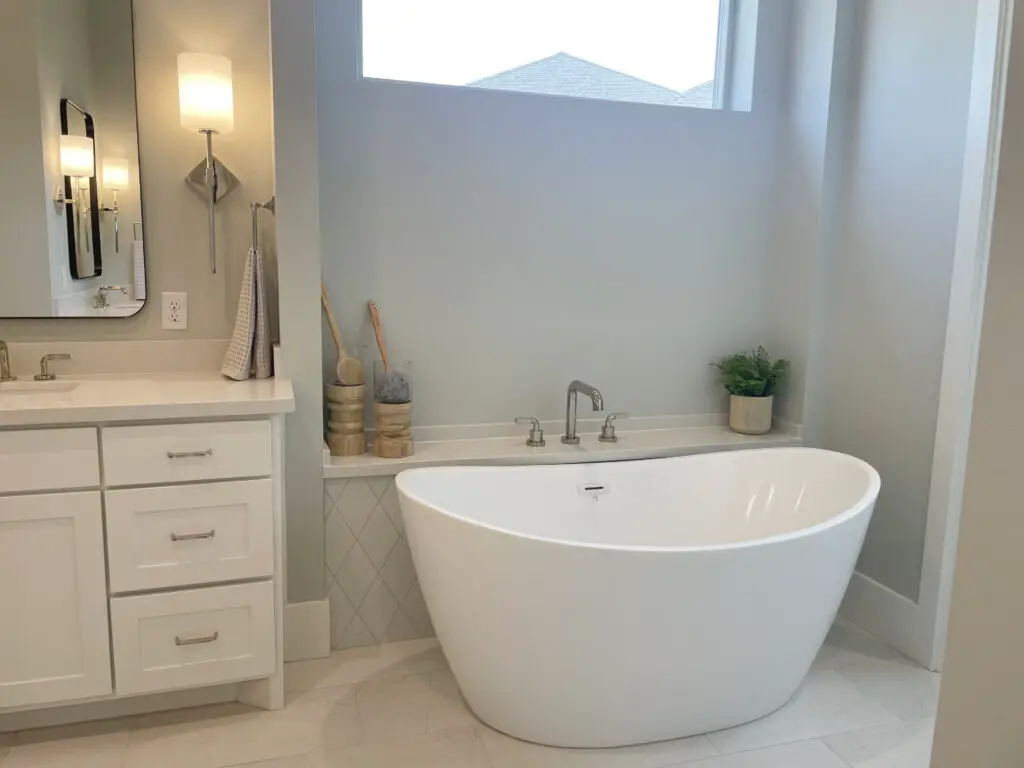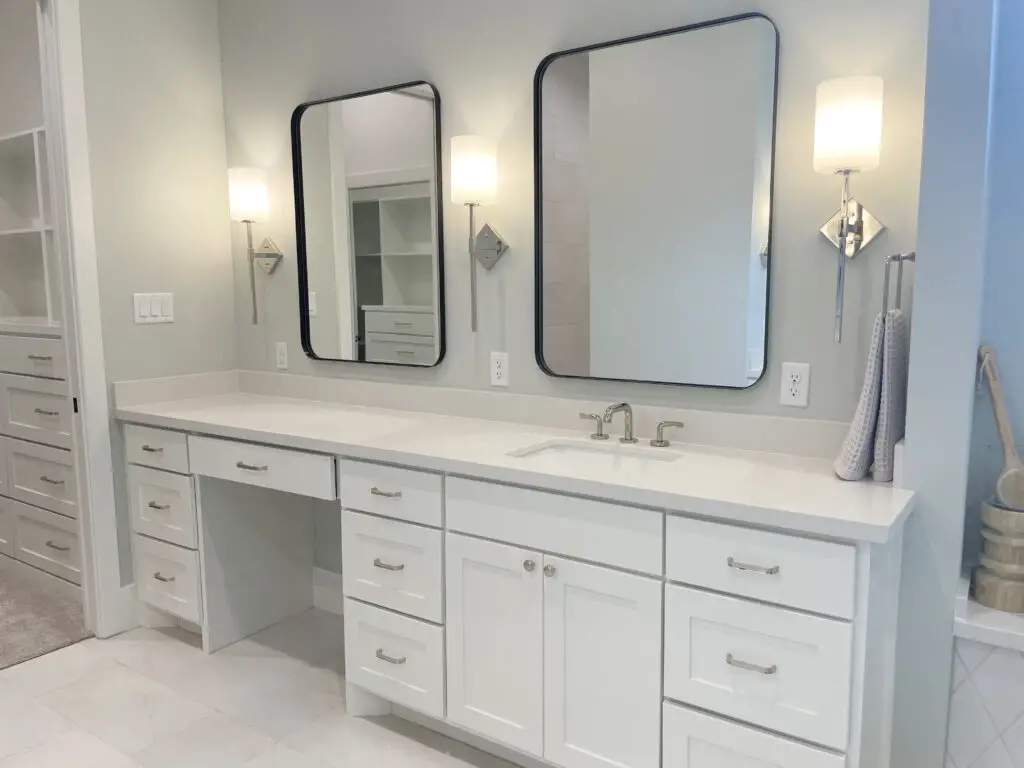Wall sconces have been an integral part of home design for ages, but they’ve recently made a fierce comeback in interior design. I am absolutely here for this new light fixture. It adds a ton of personality and character to any space while adding a beautiful accent to your walls.
There are so many styles and ways to include them in your home, but figuring out how and where to place them in your home can be a bit challenging when just starting off. That’s why I’ve written down everything you ultimately need to know about wall sconces. After reading this you will be a wall sconce pro and ready to add them to your home!
Contents
Wall Sconces, Where?

So you’ve heard about the all-famous wall sconce and now you’re wondering where you could put one in your home. Well, wall sconces are quite literally one of the most versatile lighting fixtures. They fit perfectly in any space with an open wall, but you often see them framing something like a mirror or work of art.
Here are just a few common places we see wall sconces:
- In an encolosed hallway
- Above your bathroom vanity
- Above your kitchen sink
- On either side of your bed
- Above or on either side of a piece of art
- In a small hallway
- Above your office desk
- On the exterior of your home
Pros & Cons

As you can see, there are quite a few spaces where wall sconces work within your home. Why are they so versatile? What makes them better than a traditional light fixture or lamp? There are so many pros and cons to these gorgeous accents, but I’ve narrowed it down to the most important pros and cons to help you decide if they’re right for your space.
Pro: They don’t take up valuable floor, desk, or counter space. I absolutely love a gorgeous bedside lamp, but sometimes you need to opt for a smaller bedside table or none due to room sizing constraints. Unfortunately, that doesn’t leave a ton of room for a lamp and this is where wall sconces come in! Moving the lighting up to the wall helps add a layer of light while leaving valuable space on whatever surface your light would normally rest on.

Con: Unless you want wires showing, you’re going to have to open up that wall. I love a good wall sconce, but I don’t always love the wires dangling down from them. To avoid this you will need to open up the wall and do a little electrical work.
Pro tip: Want the wall sconce, but don’t want the wires or the hardwiring challenge? You can always add Velcro or a Command Strip to the bottom of a remote puck light. This way you can stick it to the inside of your sconce and use your remote to flip the lights on and off.

Pro: It’s an easy way to add visual intrigue to your wall! Sometimes your space just needs a little va-va-voom. Adding a wall sconce next to a mirror or even in an empty hallway can help fill the space with a little extra flavor.
Con: They don’t always add as much light as you’d like. This often happens when you find one with a lamp shade or haven’t upgraded your bulb. There are a couple of simple ways to fix this, though. One of which would be changing the bulbs to a brighter one. The other would be adding recess lighting or other additional lighting into the space (besides you should always layer in lighting).
Which Should I Choose?

Although there are probably close to thousands of different styles of wall scones, we can basically categorize them into 4 types. The different types will help you establish where you would use them in your home.
- Uplight
- Downlight
- Basic
- Swing Arm

Uplights help make a space feel taller. That means they are great for living rooms and dining rooms, but they’re also the perfect addition to a smaller or more enclosed space as they can give the illusion of a bigger space. I love including these in smaller hallways or enclosed staircases.
Downlights work perfectly in smaller, more intimate spaces. These create a more romantic atmosphere which works great in bedrooms, parlors, or any other “intimate” space in your home.

Swing arms are perfect above office desks or bedside tables. Due to their flexibility, you can adjust the lighting any which way you need which makes it perfect for any area where you need workspace or reading lighting.
Basic sconce lighting is just my most general sconce term. It kind of is a catch-all for the ones that don’t fit in the other three categories. They more so disperse light outward, rather than up and down and you can use them in practically any space, but especially outside!
How Do I Hang Wall Sconces?

I will not dive into the actual how-to for hanging sconces since I’m not an electrician and I don’t want to lead you astray. However, I can give you advice on how high to hang them depending on your space!
Here’s how high to hang your wall sconces depending on the location:
- Hallways & Staircases: 6 to 6.5 feet above the floor
- Bathrooms: 5.5 to 6 feet above the floor
- Bedside: 30 to 36 inches above the top of the mattress
- Kitchens: 24 inches above the countertop
If you’re struggling to hang your wall sconces with these metrics, just remember, this isn’t paint by number. Always go with your gut & do what feels best in your home.


